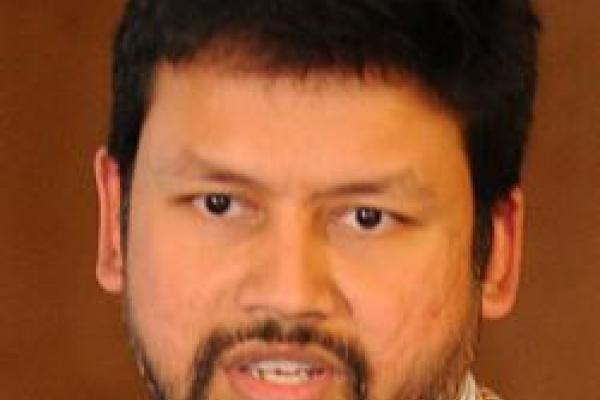Dr. Enam Chowdhury gives Condensed Matter Seminar at Princeton

Research Assistant Professor, Enam Chowdhury, gave a SPECIAL Condensed Matter Seminar to the Department of Physics at Princeton University.
Understanding strong field laser solid interaction with few cycle femtosecond pulses
As femtosecond laser interacts with matter in fundamentally different ways than how continuous wave (CW) or nano-second laser interacts, it gives rise to many interesting phenomena which may open doors for exciting future applications, like plasmon coupled high harmonic generation [Park 2011] nano-electronics [Chimmalgi 2005], etc. CW and nano-second laser pulses can be focused down to a small spot to limit the spread of laser energy to surroundings to create fine cutting, or drilling; however, laser material coupling in this way causes melting and ablation of heated up materials not only at the intended focal region, but also at significantly larger surrounding volume by heat diffusion. In the case of femtosecond lasers, electrons in interacting materials gain energy non-thermally by being accelerated in strong laser fields before the ions in the material has a chance to respond. Although much has been understood about mechanism, many fundamental aspects of laser to electron and electron to ion coupling and how it affects material modification, damage and ablation is not well understood [Bonse 2012]. We approach this problem both experimentally and using simulation focusing on i) mechanism for electron transition from valence to conduction band (dielectric) ii) interaction of light with free electrons in conduction band/vacuum (ionized dielectrics/metals) iii) how electrons couple energy to ions to melt/ablate/restructure surfaces, and how surface structure affect the interaction. Laser wavelength is a great tuning parameter in understanding these effects, because it affects all three steps described above. At the AFOSR funded Femtosecond Solid Dynamics Laboratory, we are building capabilities to probe light matter interaction with wavelengths ranging from 200 – 10,000 nm, and pulse widths from 5 – 500,000 fs. I’ll also be discussing some of our recent results on a possible new mechanism of femtosecond laser ablation with few cycle mid IR lasers, and laser ablation from femtosecond to nanosecond scale using hybrid-PIC (particle in cell) simulations. References: [Bonse 2012] Femtosecond laser-induced periodic surface structures, J Bonse, J Krüger, S Höhm, A Rosenfeld, J. Laser Appl. 24, 042006 (2012) [Chimmalgi 2005] Surface nanostructuring by nano-/femtosecond laser-assisted scanning force microscopy, A Chimmalgi, CP Grigoropoulos, K. Komvopoulos, J. App. Phys. 97, 104319, (2005) [Park 2011] Plasmonic generation of ultrashort extreme-ultraviolet light pulses Park, I-Y. et al. Nature Photon. 5, 677–681 (2011).
